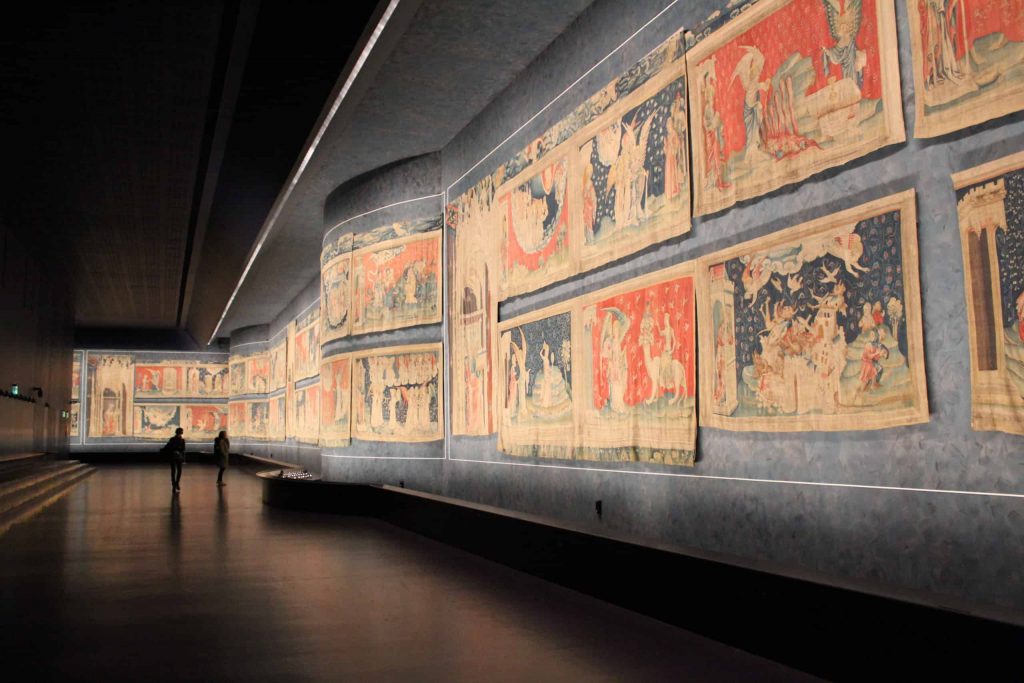
This is Part II of my series about my visit to Angers. Please see Part I HERE.
Last week I talked about my recent day trip to Angers. I talked about the cathedral, the Roman ruins, and the helpful blue line that led me throughout the city. And I talked about the beautiful contemporary tapestries on display at the Museum of Jean-Lurçat. What I didn’t talk about, however, was the most famous tapestry in Angers. This honour belongs to the Apocalypse Tapestry, found in the Angers Chateau.
Now, I know what you must be thinking. The Apocalypse Tapestry? In 2020? Very apropos. But no. I hate to disappoint, but this tapestry is not a recent creation. In fact, it is the largest and most well preserved tapestry from the Middle Ages. It dates back to the 14th century; a time when the people of France must have thought that the Apocalypse was truly upon them. But it wasn’t, and thankfully, the tapestry survived as well. It’s now on display in the most famous landmark in Angers, the equally well preserved chateau.
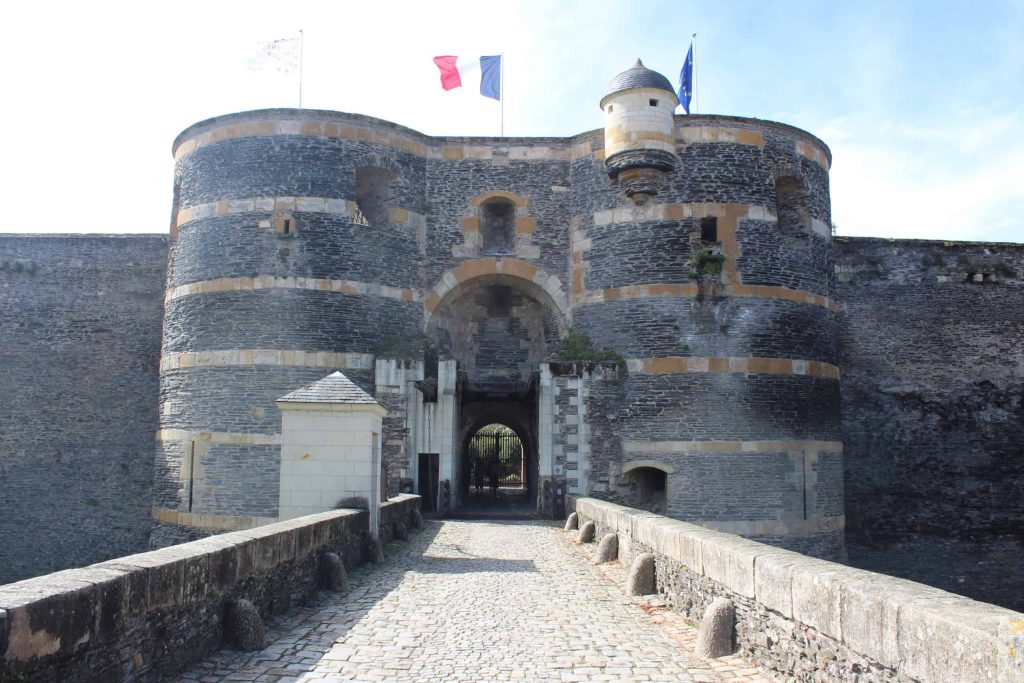
I actually chose Angers for a day trip specifically to see this chateau. This meant that it was my first stop upon arrival. This beautiful castle and fortress was originally built in the 9th century for the counts of Anjou. It was then expanded, rebuilt, and renovated over the following centuries. Today, you can walk along the beautifully preserved ramparts, visit the 15th century chapel, and marvel at the actual moat that still surrounds the complex. Although, it must be noted that Disney movies lied to me. Historically, moats were rarely filled with water, and today, the moat of the Angers Chateau holds some perfectly manicured lawns instead. But the highlight of the castle, the reason I had travelled so far, was the Apocalypse Tapestry.
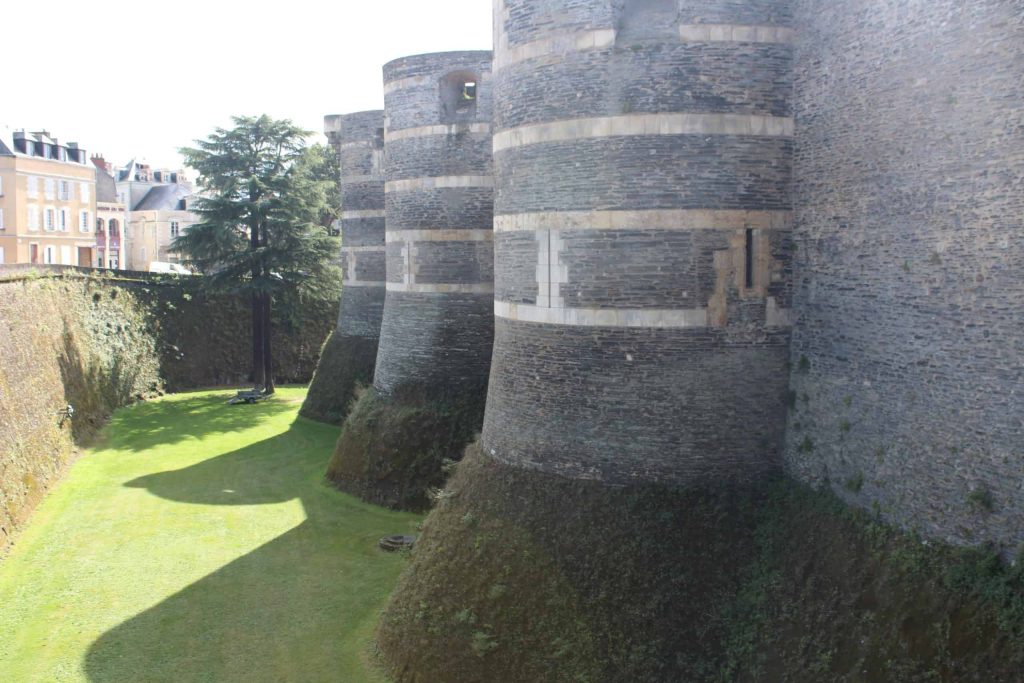
The tapestry was originally commissioned in 1375, and was completed in 1382. It was commissioned by the then Duke of Anjou, Louis I, and has survived to this day more or less intact. The tapestry measures 100 meters in length, and originally consisted of 90 panels, although only 71 still remain. It was created during the 100 Years War between England and France, and not long after the Black Death had wiped out half the population of Europe. When viewed in that context, perhaps it’s not surprising that the panels depict scenes from the Book of Revelations by St. John. In other words, the Apocalypse.
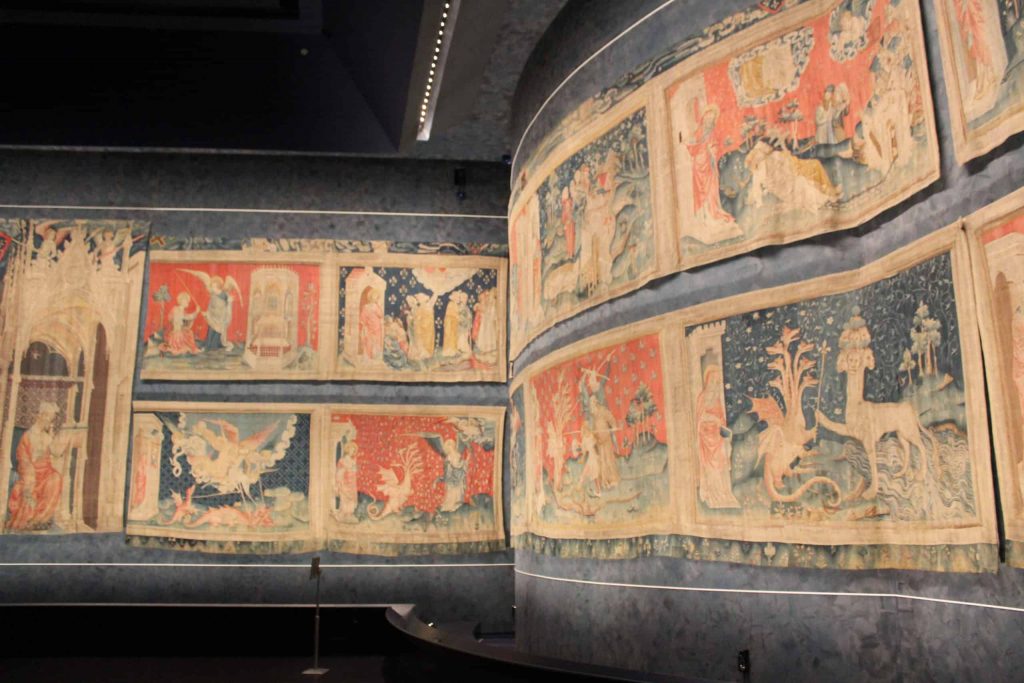
It’s hard to describe the beauty of this work of art. Each panel is exquisitely detailed, and the scenes on display are filled with bold colours and arresting images. I decided to rent an audioguide for my visit to the chateau, and it was worth every penny. Or centime, as they’re called in France. The audio commentary for the tapestry gallery went through each individual panel, describing each scene. I then had to go back and just stand in front of the panels, taking in the artistry on display. Needless to say, I was in there for hours. I’ve seen my fair share of tapestries in my lifetime, but this one was absolutely extraordinary. And the fact that it’s survived so many wars and revolutions over the centuries is nothing short of a miracle.
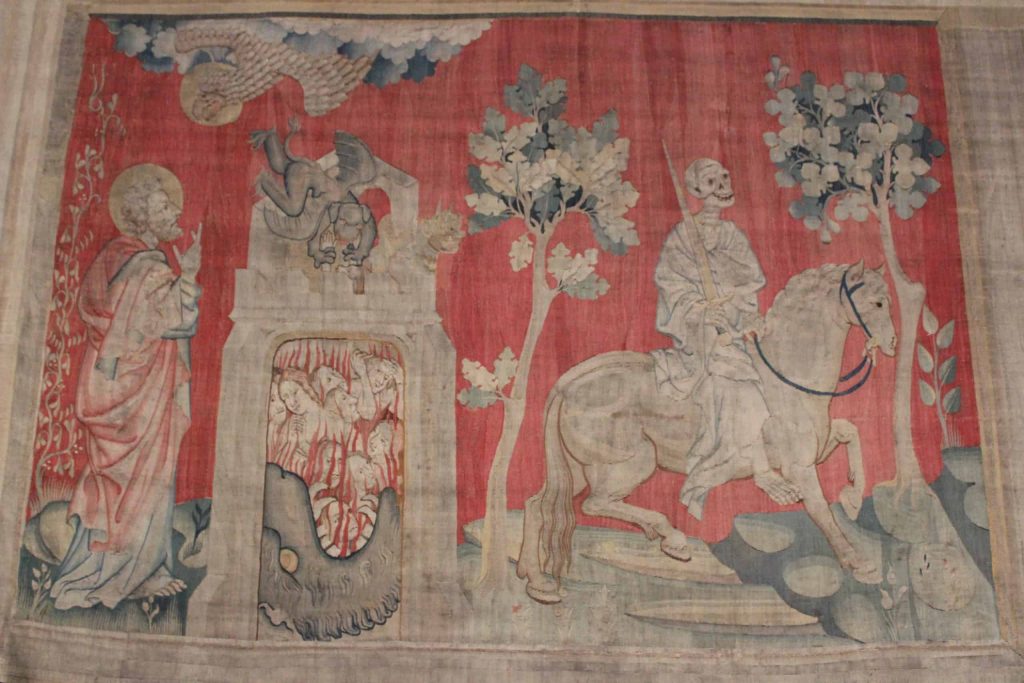
The Angers Chateau and Apocalypse Tapestry more than lived up to any expectations I may have had about my trip to Angers. I’ve since discovered that despite its historical and artistic significance, not many people know about this tapestry. Personally, I think that’s a shame. It really was jaw-droppingly beautiful. At least, mine did when I first entered the gallery. For that reason and many others, definitely add this stunning site to your itinerary the next time you’re in the Loire Valley.
Laura Moore is a professional storyteller who loves history and the many stories that make Paris one of the most fascinating cities in the world. Join one of her signature tours to learn the story of a city.



